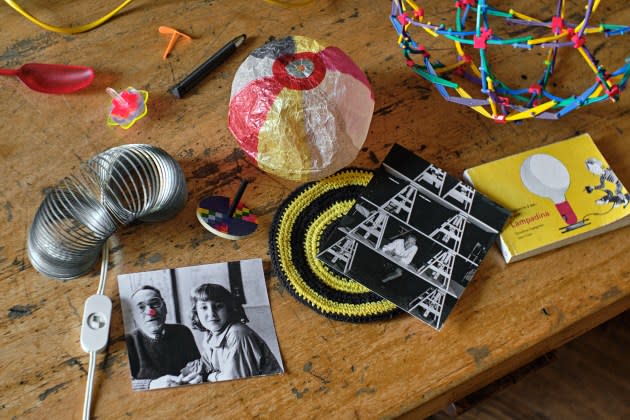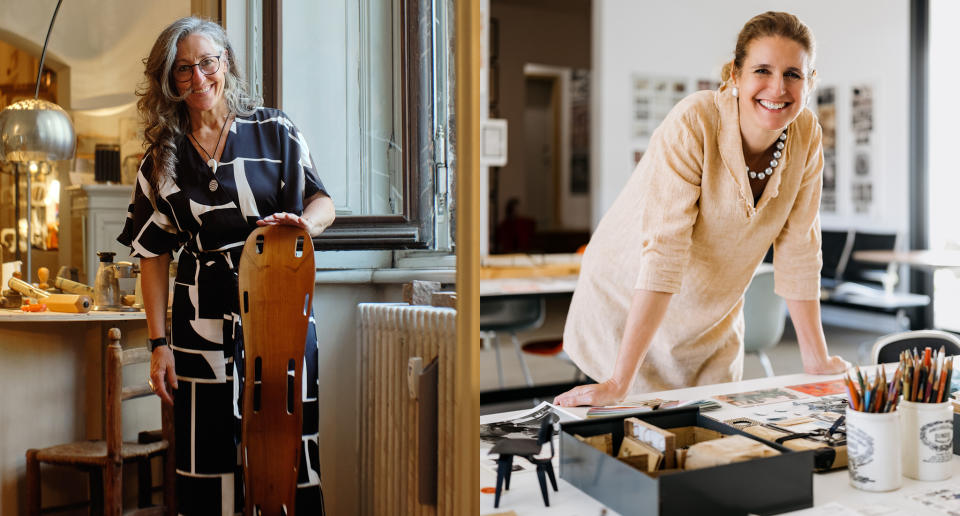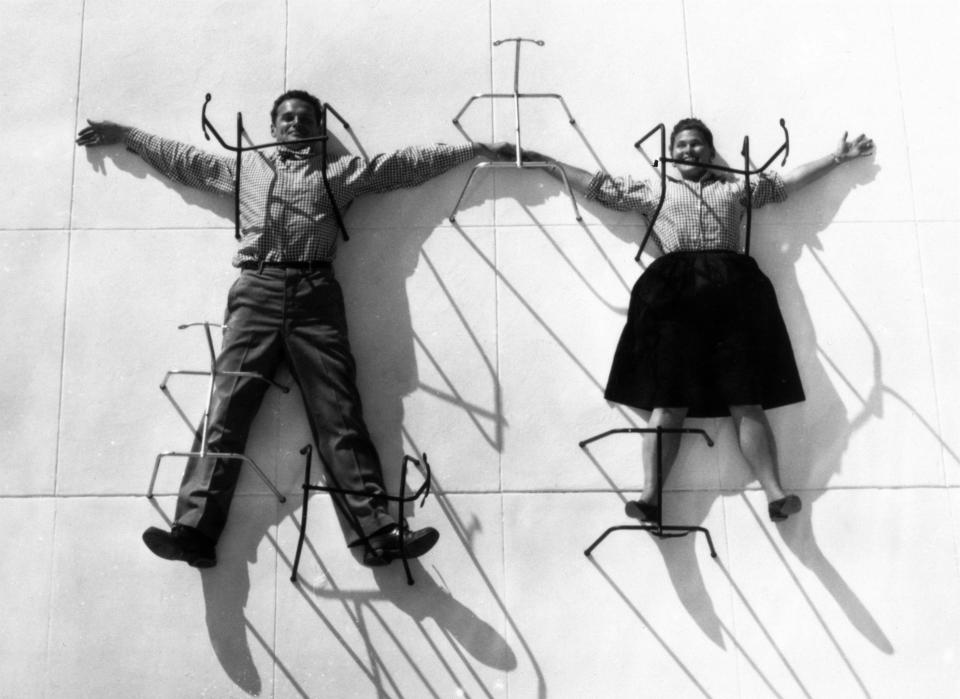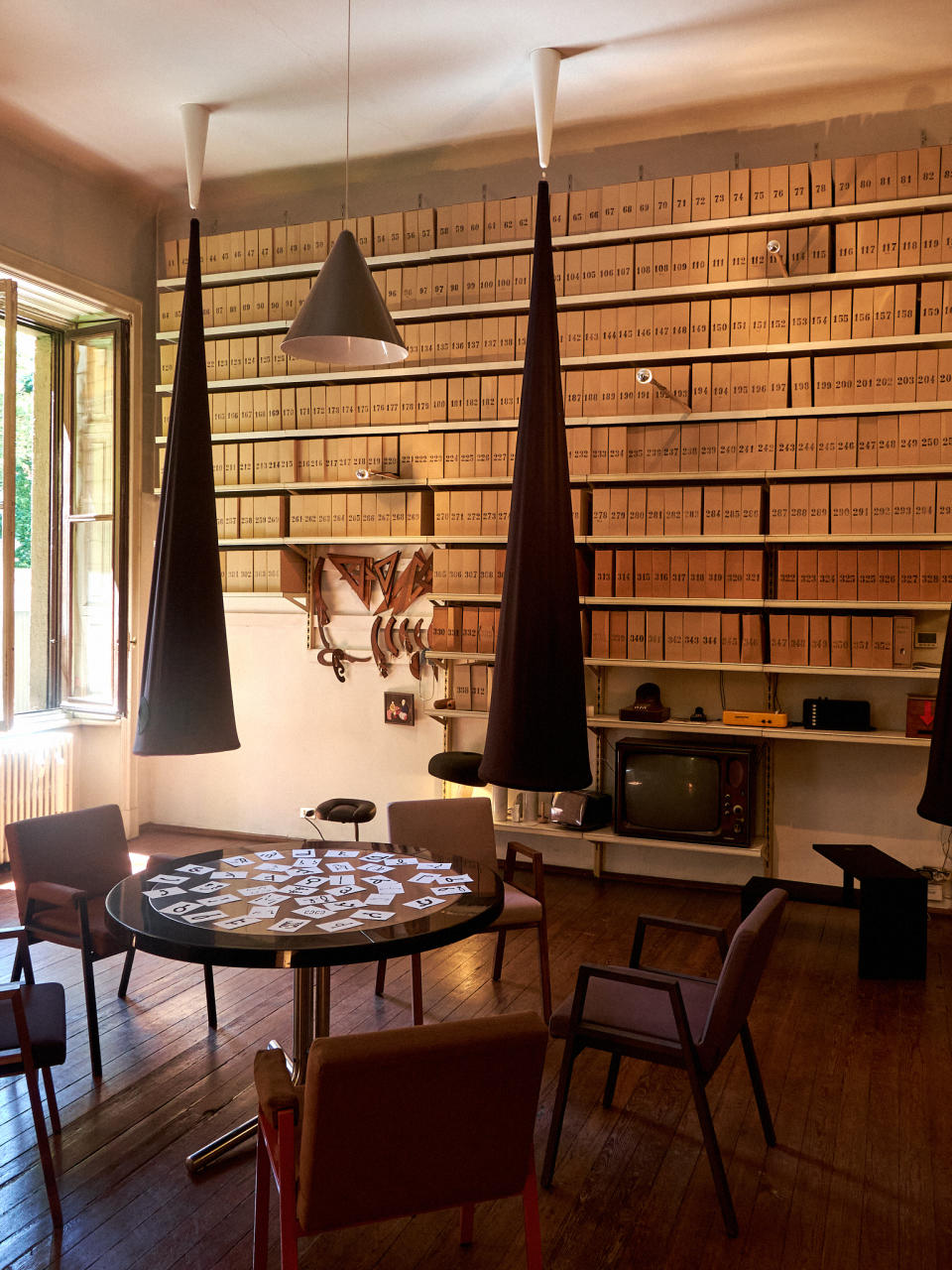Keeping Design Family Legacies Alive

MILAN — With his longtime assistant Antonella still running the show, rolls of blueprints neatly stacked and paper-covered parcels with his handwriting on it, Achille Castiglioni’s studio is pretty much exactly how he left it when he passed away in 2002.
His prestigious Piazza Castello address is just steps away from his childhood home, high school and the story of Saint Ambrose his father sculpted onto the Duomo Cathedral of Milan. Inside, his youngest child, daughter Giovanna, for whom a Flos lamp was once named, made a grand entrance with a coy smile similar to her father’s, the Unipolar foot switch he invented, dangling from her neck. “I keep my dad close to me this way,” she said.
More from WWD
A geologist now devoted to the world of design in her 50s, she recently received an eviction notice from the building’s owner. ” I don’t know where we’ll go…we have until January,” she shrugged, changing the subject as guests become easily distracted at the plethora of prototypes and tools surrounding them — she moved on to demonstrate how a mayonnaise spoon her father made for Kraft in 1962 was engineered to wipe the absolute entirety of a mayonnaise jar. “Tac, you are sure to clean everything!” she said demonstrating with a twist of the wrist. Her family’s legacy, along with her flair for bringing their story to life, attracts more than 7,000 visitors each year, 50 percent of whom are from abroad. “I don’t have any children, so when I am gone, I have no idea who will take over this place.”
Milan-based interior designer, Montreal-native Marina Baracs happened to pass by the foundation that day, and was visibly troubled to hear the news. Baracs worked on prestigious five-star hotels in Europe, Africa, North America and Asia and is a consultant and lecturer in Milan. The Castiglioni Foundation, she said, is always one of the must-see spots on her self-designed Milan tour for international guests. “By keeping the foundation they can ‘educate’ future generations of architects/designers, which I think is very important. They way Giovanna gives an inside perspective is priceless.” The design community has rallied around them and a petition led by architect and Triennale Milano president Stefano Boeri, was organized in April this year.
In another room, a group of university students were being shown the ongoing exhibit where a diverse array of objects are collected in hanging black tents, underscoring how important it is to see and touch Castiglioni’s designs. Flashcards with “gesture” symbols de-code Castiglioni’s engineering language, revealed how parts of furniture or machinery move and in which direction. The son of a sculptor, he and his brothers Pier Giacomo and Livio are still today regarded as three of the world’s most recognized designers and architects. Achille and Pier Giacomo started their own Milan studio 61 years ago and together they created the Arco lamp for Flos, one of the most famous lamps ever made and a best-seller to this day. Achille’s spiral ashtray for Alessi is also on display, so is a leg splint Ray and Charles Eames made during the war — a gift to Castiglioni and a contributing inspiration to the Eames family’s design ethos — just one of many treasures among thousands, in the studio’s four walls.
In addition to chairs and tables, lamps and bookcases, Achille cleverly designed valet stands, dishes and flatwares, school desks and hospital beds, sinks and even toilet bowls. He also created a little swivel desk that transforms into a chair and stool, just for Giovanna, so she could work beside him in his office where he labored and played a lot with objects like her mother’s bundt cake pans sitting in a row.
The rent, which is 80,000 euros per year, Giovanna said, is paid for in part by the family (Giovanna and her older brother Carlo) and partly from another group of companies. “My hope in the future is to form a scientific board of industry pillars interested in keeping my father’s legacy alive and maybe even a sponsor,” like the Eames family has, she said. In fact Giovanna and Llisa Demetrios, Ray and Charles’ Eames granddaughter and the Eames Institute’s chief curator, have bonded over keeping their family legacies alive. As a result, an upcoming design conversation between two will go live Wednesday on the Eames Institute website, in their latest feature for the institute’s magazine Kazam!

Demetrios said she was “crestfallen” when she heard the news.
“There will always be interest in the work of Achille Castiglioni. The best case scenario is for the Castiglioni Foundation to find new ways to share the legacy both in-person and digitally. If the Castiglioni Foundation has to move, then my hope is that they start sharing the work digitally as they look for a future site to hold the collection. And then I hope they plan many exhibitions and create more catalogues of his work,” Demetrios suggested.
Giovanna, who also travels to academies and universities worldwide said she enjoys “carrying around my father’s objects like Mary Poppins and lecturing to future leaders of design,” despite the arduous effort. The Eames family, she reflected, has been fortunate in garnering support for their family’s institute, perhaps due in part to the fact that they are easily the most famous and important design visionaries whose work has endured the longest in the Los Angeles area. In Milan, the Castiglioni family is surrounded by vestiges of the past, designed by a plethora of greats including Gio Ponti, Ettore Sottsass and Enzo Mari.

Demetrios, a renowned artist in her own right, curates physical and online exhibits and has been successful in perpetuating the family name through curated storytelling. The Eames Institute of Infinite Curiosity was also fortunate enough to receive support from industrial designer and Airbnb cofounder Joe Gebbia also supported their work to create a home for curious problem-solvers. Gebbia has pledged to continue to make the Institute a cornerstone of his philanthropy — which also focuses on global human rights and refugee relief, education and environmental issues.
The Le Corbusier Foundation in France, by comparison, has direct sponsors like Cassina, which published a collection of iconic furniture designed by Le Corbusier, including the 1928-29 tubular furniture created with Pierre Jeanneret and Charlotte Perriand. French materials trading, concrete and industrial joinery firm Herige Group, has supported the digitization and online publication of the foundation’s collections, making them accessible to a larger public.
Demetrios said the task bestowed upon her to bring forth her family’s legacy is a welcomed one.
“Being able to share the legacy of Ray and Charles in this way, to showcase their incredible process and wide-angled vision of design, is the dream of a lifetime. Their boundless curiosity and relentless pursuit of solving problems in furniture, film, exhibits, architecture and textiles is in the name of the Institute. hope the Institute’s efforts will help people find inspiration for solving problems in their own world.”
What she and Giovanna have in common is a passion for storytelling.
“We both like to introduce guests to the range of designs, and help guests start to connect the dots through the layers of material, and then see as something resonates with them. A special moment on the tour for me was seeing the leg splint by my grandparents on the wall of her father’s studio. I also enjoyed talking with Giovanna about looking at an archival object as a young child and then later as a curator,” she mused.
Fashion designer Arthur Arbesser, who among his various home and interior projects has recently been tapped as creative counsel for historic Austrian furniture maker Wittmann M?belwerkst?tten, also happened to pass by the Castiglioni Foundation last week with his staff. In response to the eviction notice, he said it’s “insane that foundations like these that represent the creative, fertile soil of this country” struggle to stay alive. “To me, the Fondazione Castiglioni really invites you to dream, think and look at the world with different eyes and my whole team left this place so happy.”

The tour comes to a close and Giovanna has one last thing to show guests — the original Zanotta “Sella” stool, a standing bicycle seat her father and his brother Pier Giacomo designed. “Ring ring,” she chirps, answering the dial phone pretending to call her mother, asking if pasta is for dinner. “This ensured people didn’t stay on the phone too long, back in the day phone calls were expensive,” Giovanna said still holding the phone in her hand. Her upbeat expression turns to a puzzled one. “Who knows if younger generations will even know what the heck this thing is?”

Best of WWD
